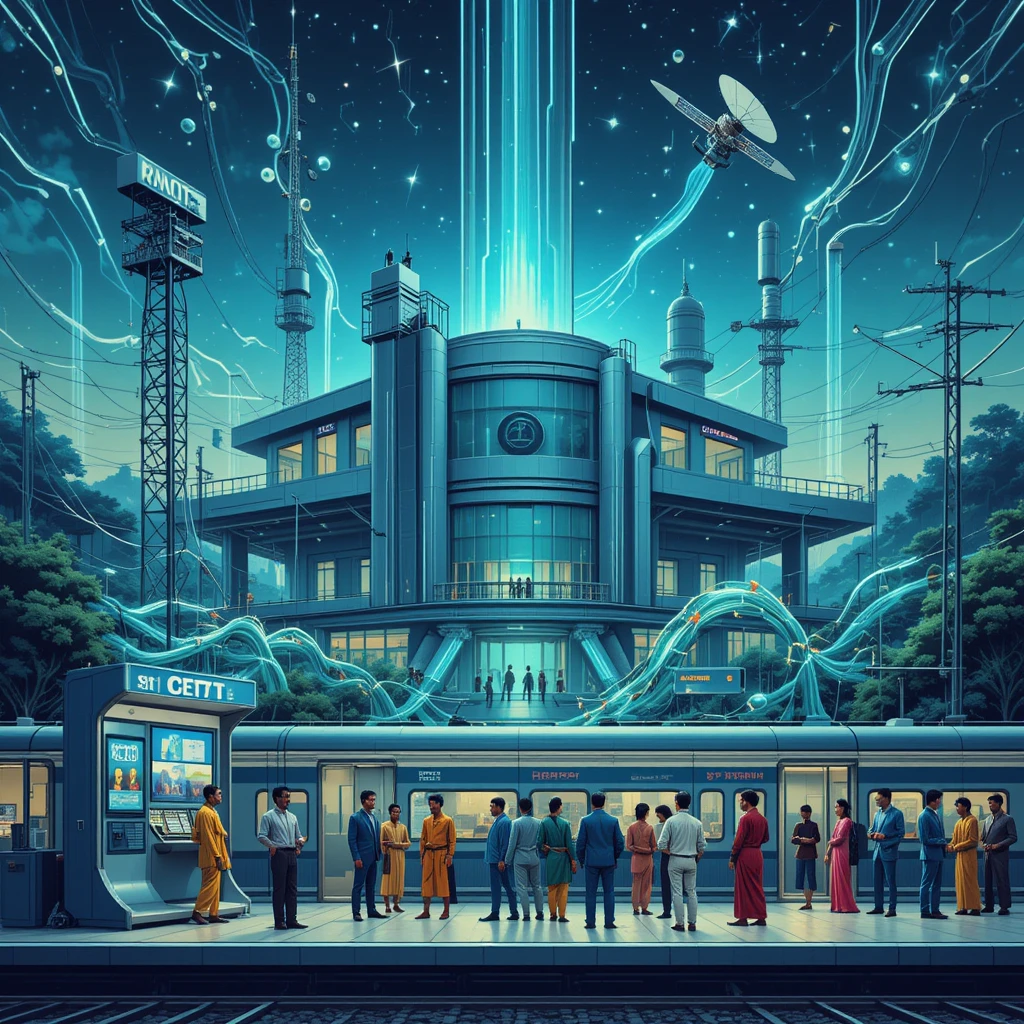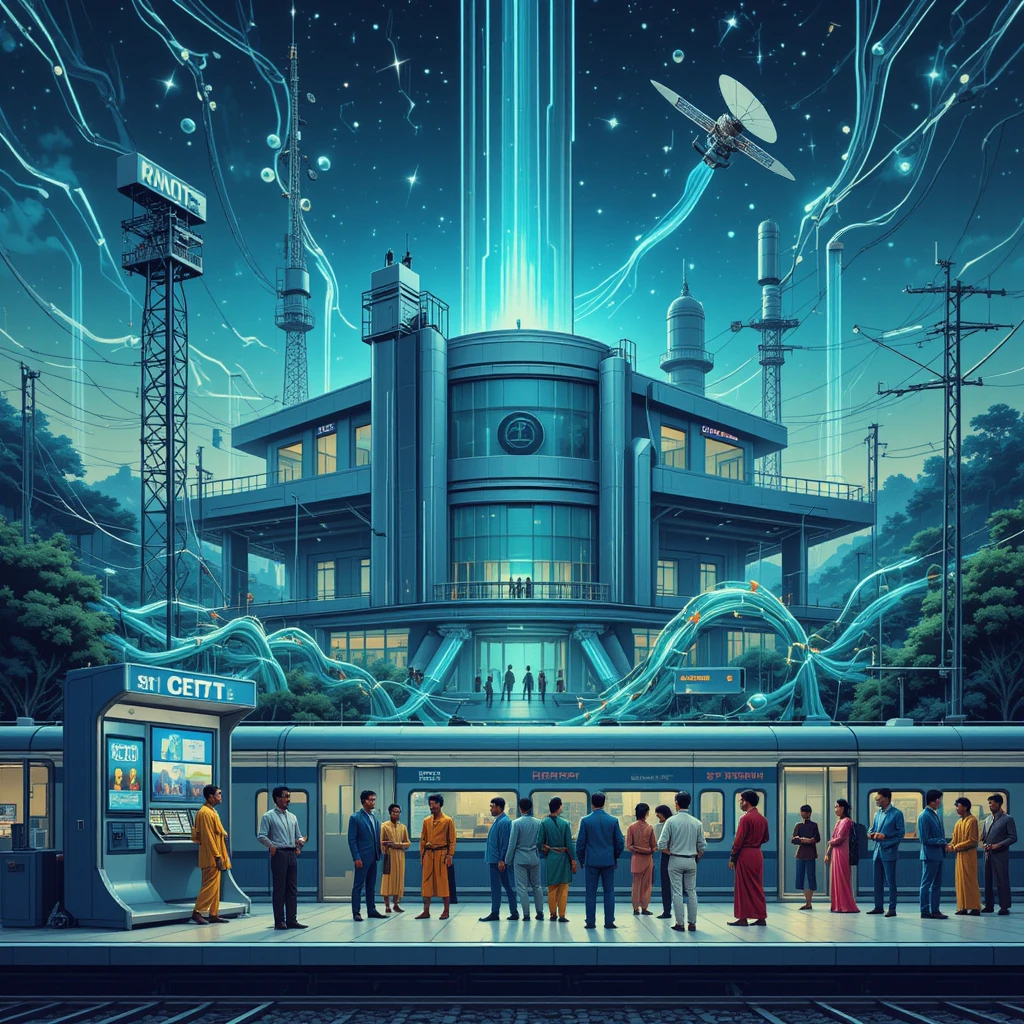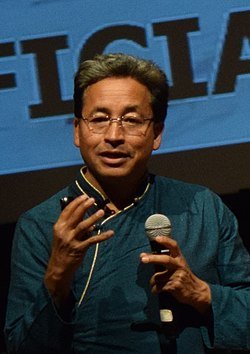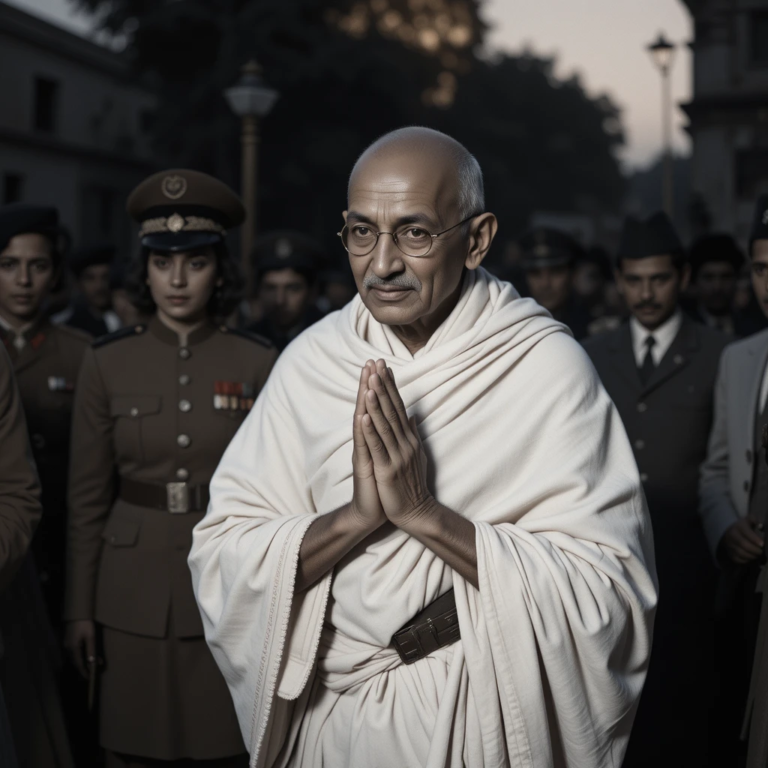Rajiv Gandhi, India’s sixth Prime Minister, served from October 31, 1984, to December 2, 1989, stepping into the role at the age of 40, making him the youngest leader to helm the nation. His entry into politics was not a planned ascent but a response to tragedy—first, the death of his younger brother Sanjay Gandhi in 1980, and then the assassination of his mother, Prime Minister Indira Gandhi, in 1984. A former commercial pilot with little political experience, Rajiv brought a fresh, youthful perspective to governance, driven by a vision to transform India into a modern, technologically advanced, and inclusive nation. His tenure was marked by bold reforms in economic policy, technology, education, rural development, and governance, laying foundational pillars for India’s emergence as a global economic and technological powerhouse. This article comprehensively explores Rajiv Gandhi’s key initiatives, the institutions and legislative acts he championed, their achievements as of August 9, 2025, and his enduring legacy in shaping modern India.

Table of Contents
Economic Reforms: Laying the Groundwork for Liberalization
Dismantling the License Raj
When Rajiv Gandhi assumed office, India’s economy was constrained by the “License Raj,” a system of excessive bureaucratic controls that stifled industrial growth and innovation. Recognizing the need for economic dynamism, Rajiv initiated early liberalization measures that marked a departure from the heavily regulated framework inherited from previous decades. His government simplified licensing procedures, particularly for industries like electronics, computers, and telecommunications, which were seen as critical for modernization. By reducing the number of licenses required to start or expand businesses, he encouraged private sector participation and entrepreneurship, fostering a more competitive economic environment.
The Seventh Five-Year Plan (1985-1990), overseen by the Planning Commission, was a cornerstone of his economic strategy. The plan targeted an ambitious 5% annual GDP growth rate, focusing on infrastructure development, agricultural productivity, and industrial expansion. Investments were channeled into key sectors such as power generation, transportation, and irrigation, aiming to create a robust economic foundation. Rajiv’s administration also lowered income and corporate tax rates to stimulate investment and consumer spending, while reducing import duties on capital goods to facilitate technological upgrades. These measures attracted foreign investment and laid the groundwork for the comprehensive economic liberalization of 1991 under P.V. Narasimha Rao, which transformed India into a global economic player.

Achievements as of 2025
The economic reforms initiated by Rajiv Gandhi had a profound impact. During his tenure, India’s GDP growth averaged 5.6% annually, a significant improvement over the 3-4% growth rates of the preceding decades. The Planning Commission, which guided these policies, was replaced by NITI Aayog in 2015, but its legacy of strategic economic planning continues to shape India’s development. By 2025, India’s GDP has reached $3.94 trillion, reflecting the long-term impact of Rajiv’s early liberalization efforts. The simplified licensing system fostered the growth of industries like information technology and manufacturing, contributing to India’s rise as a global economic hub. Foreign direct investment (FDI) inflows, which Rajiv’s policies began to attract, reached $81 billion in 2024-25, underscoring India’s attractiveness as an investment destination.
Technological Revolution: Pioneering IT and Telecom
Centre for Development of Telematics (C-DOT)
One of Rajiv Gandhi’s most visionary contributions was his emphasis on technology as a driver of national progress. In 1984, he established the Centre for Development of Telematics (C-DOT), a public-sector research organization tasked with developing indigenous digital switching systems for telecommunications. At the time, India relied heavily on imported telecom equipment, which was costly and limited rural connectivity. C-DOT’s development of affordable, locally produced systems enabled the expansion of telephony to rural areas, bridging the urban-rural divide and laying the foundation for India’s telecom revolution.
Mahanagar Telephone Nigam Limited (MTNL)
In 1986, Rajiv’s government founded the Mahanagar Telephone Nigam Limited (MTNL) to provide efficient telecom services in metropolitan cities like Delhi and Mumbai. MTNL modernized urban communication infrastructure, introducing advanced telephony systems and improving service reliability. This initiative complemented C-DOT’s rural focus, creating a balanced approach to national connectivity.
Computerization of Key Sectors
Rajiv Gandhi championed the computerization of critical sectors to enhance efficiency and transparency. The Indian Railways, one of the world’s largest rail networks, saw the introduction of the Computerized Passenger Reservation System in 1986, which revolutionized ticketing by reducing wait times and improving accessibility. Similar computerization efforts were extended to government offices, banks, and public sector enterprises, streamlining operations and reducing bureaucratic delays. These initiatives were supported by the establishment of the National Informatics Centre (NIC), which became a backbone for e-governance in India.

Technology Missions
In 1987, Rajiv launched six Technology Missions under the Department of Science and Technology and other ministries, targeting critical areas: drinking water, immunization, literacy, oilseeds, telecommunications, and dairy development. These missions integrated scientific advancements into governance, addressing pressing societal needs. For instance, the Drinking Water Mission aimed to provide clean water to rural areas, while the Telecom Missionsupported C-DOT’s efforts to expand connectivity. The Oilseeds Mission sought to reduce India’s dependence on imported edible oils, boosting agricultural self-reliance.
Achievements as of 2025
Rajiv Gandhi’s technological initiatives have had a lasting impact. C-DOT’s innovations have connected over 600 million rural telecom subscribers by 2025, forming the backbone of the Digital India initiative, which aims to provide universal internet access. MTNL, despite facing competition from private telecom giants, remains a key PSU, offering 4G and broadband services in urban centers. The Indian Railways’ digital ticketing system, now managed by the Indian Railway Catering and Tourism Corporation (IRCTC), handles over 1.5 million daily online bookings, making rail travel more accessible than ever.
The Technology Missions have also borne fruit. The National Mission on Oilseeds and Oil Palm, a successor to Rajiv’s initiative, has increased domestic oilseed production to 40 million tonnes annually by 2025, reducing import dependency by 15% since the 1980s. The Drinking Water Mission evolved into the Jal Jeevan Mission, which has provided tap water to 75% of rural households by 2025. India’s IT sector, catalyzed by Rajiv’s policies, now generates $194 billion in exports, with cities like Bangalore, Hyderabad, and Pune emerging as global IT hubs. The NIC supports over 3,500 e-governance projects, enabling services like Aadhaar and online tax filing.
Educational Reforms: Building a Skilled and Empowered Youth
National Policy on Education (1986)
Education was a cornerstone of Rajiv Gandhi’s vision for a modern India. In 1986, his government introduced the National Policy on Education (NPE), implemented through the Ministry of Human Resource Development (now Ministry of Education). The NPE aimed to universalize elementary education, promote vocational training, and integrate technology into learning. It emphasized equal access to education for all, particularly for marginalized communities and rural populations, to foster social mobility and economic growth.
Jawahar Navodaya Vidyalayas
To provide quality education to talented rural students, Rajiv established the Navodaya Vidyalaya Samiti in 1986, launching the Jawahar Navodaya Vidyalayas (JNVs). These residential schools offer free education, focusing on students from economically disadvantaged backgrounds. JNVs combine academic excellence with extracurricular development, nurturing future leaders in diverse fields.

Jawaharlal Nehru Centre for Advanced Scientific Research (JNCASR)
In 1989, Rajiv founded the Jawaharlal Nehru Centre for Advanced Scientific Research (JNCASR) in Bangalore to promote cutting-edge research in science and technology. JNCASR was envisioned as a hub for interdisciplinary research, fostering innovation in areas like materials science, biotechnology, and renewable energy.
Lowering the Voting Age
Through the Constitution (Sixty-First Amendment) Act, 1988, Rajiv’s government lowered the voting age from 21 to 18, empowering over 50 million young Indians to participate in the democratic process. This bold move recognized the potential of India’s youth demographic, aligning governance with the aspirations of a younger generation.
Achievements as of 2025
The National Policy on Education has significantly shaped India’s education landscape. By 2025, India’s literacy rate has reached 86.8%, driven by programs like Sarva Shiksha Abhiyan, which builds on the NPE’s framework to achieve near-universal elementary education. Over 660 JNVs educate 2.8 lakh students annually, with alumni excelling in civil services, IT, and academia, contributing to India’s skilled workforce. JNCASR ranks among India’s top research institutions, with breakthroughs in nanotechnology, green energy, and health sciences, including patents for solar cell technologies and drug delivery systems.
The lowered voting age has strengthened democratic participation, with youth voter turnout reaching 67% in the 2024 general elections. The Ministry of Education continues to implement the National Education Policy (NEP) 2020, which builds on Rajiv’s vision by emphasizing digital learning and skill development, aligning education with 21st-century needs.
Decentralization: Empowering Grassroots Governance
Panchayati Raj Reforms
Rajiv Gandhi’s commitment to participatory democracy led to transformative reforms in local governance. In 1989, his government introduced the 64th and 65th Constitutional Amendment Bills, aiming to grant constitutional status to Panchayati Raj Institutions (PRIs) and urban local bodies. These bills mandated regular elections, financial autonomy, and reservations for women and marginalized communities, ensuring inclusive governance. Although the bills faced opposition and were enacted later as the 73rd and 74th Constitutional Amendments in 1992, Rajiv’s vision laid the groundwork for decentralized democracy.
District Rural Development Agencies (DRDAs)
Rajiv strengthened the District Rural Development Agencies (DRDAs) to implement anti-poverty programs like the Integrated Rural Development Programme (IRDP). DRDAs facilitated rural infrastructure projects, microcredit schemes, and skill development, empowering local communities to address their unique challenges.
Achievements as of 2025
The Panchayati Raj system has transformed rural India. By 2025, over 3.1 million elected PRI representatives, including 46% women, govern 2.5 lakh panchayats, managing local development projects like roads, schools, and healthcare centers. Programs like the Rashtriya Gram Swaraj Abhiyan have built on Rajiv’s reforms, enhancing PRI capacity through training and digital tools. DRDAs have supported schemes like the Mahatma Gandhi National Rural Employment Guarantee Act (MGNREGA), providing 2.8 billion person-days of employment since 2006, reducing rural poverty by 20% over two decades.
Agricultural and Rural Development
Oilseed Technology Mission (1986)
To address India’s dependence on imported edible oils, Rajiv launched the Oilseed Technology Mission in 1986 under the Ministry of Agriculture. The mission promoted high-yielding varieties, improved irrigation, and farmer training to boost oilseed production. It aimed to achieve self-reliance and stabilize rural economies.
National Project on Pulses
The National Project on Pulses, also launched in 1986, focused on increasing pulse production to enhance food security and nutrition. By supporting research and extension services, the project aimed to make pulses affordable and accessible, particularly for low-income households.
Indian Council of Agricultural Research (ICAR)
Rajiv strengthened the Indian Council of Agricultural Research (ICAR), which developed modern farming techniques, including drought-resistant seeds and precision agriculture. ICAR’s efforts aligned with Rajiv’s vision of a technologically advanced agricultural sector.
Achievements as of 2025
The Oilseed Technology Mission has significantly increased domestic production to 40 million tonnes annually by 2025, reducing import dependency by 15% since the 1980s. The National Project on Pulses has boosted pulse production to 26 million tonnes in 2024-25, making India nearly self-sufficient in pulses and improving nutritional outcomes. ICAR’s innovations have increased agricultural productivity by 20% since the 1980s, with over 1,000 high-yielding crop varieties released, benefiting 120 million farmers. The Pradhan Mantri Krishi Sinchayee Yojana, a modern irrigation scheme, builds on Rajiv’s focus on agricultural modernization, covering 70 million hectares by 2025.
Environmental and Scientific Initiatives
National Mission for Clean Ganga (1985)
Rajiv Gandhi’s commitment to environmental sustainability led to the launch of the National Mission for Clean Ganga in 1985 under the Ministry of Environment. The mission aimed to reduce pollution in the Ganga River, a lifeline for millions, through sewage treatment plants and public awareness campaigns.
Indian Space Research Organisation (ISRO)
Rajiv supported the Indian Space Research Organisation (ISRO), promoting satellite technology for agriculture, weather forecasting, and disaster management. His government’s investment in remote sensing and communication satellites strengthened India’s self-reliance in space technology.
Achievements as of 2025
The National Mission for Clean Ganga, succeeded by the Namami Gange Programme, has reduced pollution by 35% in key river stretches by 2025, with 200 sewage treatment plants operational. ISRO has emerged as a global leader, achieving milestones like the 104-satellite launch in 2017 and the Chandrayaan-3 lunar landing in 2023. India’s space economy, projected to reach $13 billion by 2030, owes much to Rajiv’s early support for ISRO’s growth.
Political Stability: Anti-Defection Law
Constitution (Fifty-Second Amendment) Act, 1985
To curb political instability caused by opportunistic defections, Rajiv’s government enacted the Constitution (Fifty-Second Amendment) Act, 1985, also known as the Anti-Defection Law. This legislation disqualified legislators who switched parties, ensuring stable governance and protecting democratic mandates.
Achievements as of 2025
The Anti-Defection Law has strengthened India’s democratic framework by reducing party-switching, with over 90% of disqualification cases resolved under this law since 1985. It has ensured greater political accountability, supporting stable coalition governments in a multi-party democracy.
Foreign Policy and Global Integration
Department of Space and ISRO
Rajiv’s foreign policy emphasized peaceful uses of space technology, with the Department of Space and ISROplaying key roles in international collaborations. His government’s investments in satellite technology enhanced India’s global standing.
Ministry of External Affairs
Rajiv improved India’s relations with superpowers like the United States and the Soviet Union, fostering economic diplomacy to attract foreign investment and technology transfers. His leadership in the Non-Aligned Movement and advocacy for nuclear disarmament reinforced India’s role as a global peace advocate.
Achievements as of 2025
India’s space economy, driven by ISRO, is projected to reach $13 billion by 2030, with international partnerships in satellite launches and space exploration. The Ministry of External Affairs has built on Rajiv’s diplomacy, with India securing $81 billion in FDI inflows in 2024-25, reflecting global confidence in its economy. India’s leadership in forums like the G20 and BRICS traces back to Rajiv’s efforts to integrate the nation into the global order.
Challenges and Controversies
Despite his achievements, Rajiv Gandhi’s tenure faced significant challenges. The Bofors scandal (1987), involving alleged kickbacks in a defense deal with Sweden, tarnished his government’s image and eroded public trust. The Shah Bano case (1985), where his government overturned a Supreme Court verdict on alimony for Muslim women through the Muslim Women (Protection of Rights on Divorce) Act, 1986, drew criticism for appeasing conservative elements. The deployment of the Indian Peace Keeping Force (IPKF) in Sri Lanka (1987-1990) to mediate the civil war was controversial, leading to significant casualties and contributing to his assassination by the Liberation Tigers of Tamil Eelam (LTTE) in 1991.
Legacy and Lasting Impact
Rajiv Gandhi’s assassination on May 21, 1991, marked the tragic end of a visionary leader, but his legacy endures. Institutions like C-DOT, MTNL, JNVs, and JNCASR, along with legislative acts like the Anti-Defection Law and Panchayati Raj reforms, continue to shape India’s progress. His policies catalyzed India’s transformation into a $3.94 trillion economy by 2025, with a thriving IT sector, robust rural governance, and a strong global presence. As technocrat Sam Pitroda, a close aide, noted, Rajiv’s ideas “laid the foundation for a modern India four decades ago,” enabling its rise as a global leader in technology, education, and democracy.
Rajiv’s vision of a poverty-free, technologically advanced, and inclusive India continues to inspire. His emphasis on youth, innovation, and grassroots empowerment has left an indelible mark, positioning India to meet the challenges of the 21st century with confidence and ambition.
References and Sources
- Guha, Ramachandra. India After Gandhi: The History of the World’s Largest Democracy. HarperCollins, 2007.
- Hardgrave, Robert L., and Stanley A. Kochanek. India: Government and Politics in a Developing Nation. Harcourt, 2008.
- Economic Survey of India, 1985-86. Ministry of Finance, Government of India.
- Planning Commission. Seventh Five-Year Plan (1985-1990). Government of India, 1985.
- Pitroda, Sam. The Telecom Revolution in India: Technology, Regulation, and Policy. Oxford University Press, 2015.
- Ministry of Human Resource Development. National Policy on Education, 1986. Government of India, 1986.
- Kohli, Atul. Democracy and Development in India: From Socialism to Pro-Business. Oxford University Press, 2009.
- Frankel, Francine R. India’s Political Economy, 1947-2004. Oxford University Press, 2005.
- Rudolph, Lloyd I., and Susanne Hoeber Rudolph. In Pursuit of Lakshmi: The Political Economy of the Indian State. University of Chicago Press, 1987.
- Centre for Development of Telematics. Annual Report 2024-25. C-DOT, 2025.
- Ministry of Agriculture. Annual Report on Technology Missions, 1987. Government of India, 1987.
- Election Commission of India. Report on General Elections, 2024. Government of India, 2024.
- National Informatics Centre. E-Governance in India: A Journey. NIC, 2023.
- Constitution (Fifty-Second Amendment) Act, 1985. Ministry of Law and Justice, Government of India.
- Navodaya Vidyalaya Samiti. Annual Report 2024-25. Ministry of Education, 2025.
- Ministry of Environment. Namami Gange Programme Progress Report. Government of India, 2025.
- Ministry of Panchayati Raj. Panchayati Raj Institutions: Impact Assessment 2025. Government of India, 2025.
- Indian Council of Agricultural Research. Annual Report 2024-25. ICAR, 2025.
- Pitroda, Sam. Dreaming Big: My Journey to Connect India. Penguin India, 2015.
- International Monetary Fund. World Economic Outlook, 2025. IMF, 2025.
- Telecom Regulatory Authority of India. Annual Report 2024-25. TRAI, 2025.
- Mahanagar Telephone Nigam Limited. Annual Report 2024-25. MTNL, 2025.
- Indian Railway Catering and Tourism Corporation. Annual Report 2024-25. IRCTC, 2025.
- Ministry of Agriculture. National Mission on Oilseeds and Oil Palm: Progress Report 2025. Government of India, 2025.
- NASSCOM. Indian IT Industry Report 2025. NASSCOM, 2025.
- Ministry of Education. Education Statistics at a Glance 2025. Government of India, 2025.
- Jawaharlal Nehru Centre for Advanced Scientific Research. Annual Report 2024-25. JNCASR, 2025.
- Ministry of Rural Development. MGNREGA Impact Report 2025. Government of India, 2025.
- Indian Space Research Organisation. Annual Report 2024-25. ISRO, 2025.
- Ministry of External Affairs. FDI Inflows Report 2024-25. Government of India, 2025.
- Ministry of Law and Justice. Anti-Defection Law: Impact Assessment 2025. Government of India, 2025.




